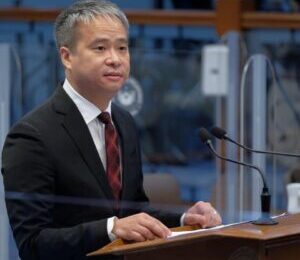
CITY OF SAN FERNANDO, Pampanga (PIA) — Central Luzon is the top producer of various fish and aquatic resources.
It contributes about 57 percent of the national output in tilapia. The region also ranks first in shrimp, mangrove crab, and shellfish production.
During the fourth episode of the Kapihan sa Bagong Pilipinas of the Philippine Information Agency, Bureau of Fisheries and Aquatic Resources (BFAR) Regional Director Wilfredo Cruz disclosed that in the first quarter of 2024, Central Luzon led in milkfish production.
“While we don’t know the rankings for the subsequent quarters yet, we consistently hold the second position nationwide in terms of milkfish production,” he added.
Aquaculture forms the backbone of the region’s fisheries industry, accounting for about 80 percent of total production.
Cruz also emphasized BFAR’s vision to achieve excellence in sustainable fisheries management, aiming for a 20 percent fish surplus and improved quality of life for fisherfolk by 2030.
The region’s extensive coastline and water resources support its vibrant fisheries industry.
As of January 2023, Central Luzon had 154,250 registered fisherfolk.
The region boasts a long coastline, including the Aurora coast (332 kilometers), Zambales coast (110 kilometers), and Manila Bay (192 kilometers).
Central Luzon utilizes its vast freshwater and brackish water fish ponds for aquaculture.
In commercial fisheries, the region produced 6,363.83 metric tons, contributing 1.80 percent of regional production.
Municipal fisheries contributed 48,392.54 metric tons (13.65 percent), while aquaculture dominated with 299,649.39 metric tons (84.55 percent).
BFAR has implemented various programs to support fisheries development, including technology outreach stations, fingerlings and seed stock production, broodstock development, mariculture operations, and distributing climate-resilient fishing gear.
The agency also focuses on post-harvest and marketing initiatives such as KADIWA ng Pangulo, trade fairs, market matching, and credit facilitation.
Cruz stressed the importance of fisheries regulatory and law enforcement programs, which involve seaborne and foot patrols, monitoring and surveillance stations, issuance of permits and licenses, and inspections of fisheries facilities and products.
To further boost the sector, BFAR offers fisheries extension programs, including training, technical assistance, and the establishment of techno demo projects.
Locally funded projects like the Special Area for Agricultural Development Program, Shellfish Development Program, and Climate Change-Disaster Risk Reduction and Management Projects also play crucial roles.
Additionally, the Philippine Fisheries and Coastal Resiliency or FishCoRe Project is a seven-year World Bank-funded initiative that aims to enhance fisheries governance through a science-based, participatory, and transparent framework.
“Our role is significant. Region 3 not only supplies fish to Metro Manila but also to neighboring regions,” Cruz emphasized.
BFAR’s commitment to sustainable fisheries management ensures that it continues to support the nation’s food security and the livelihoods of fisherfolk.
SOURCE: Rick P. Quiambao PIA3





